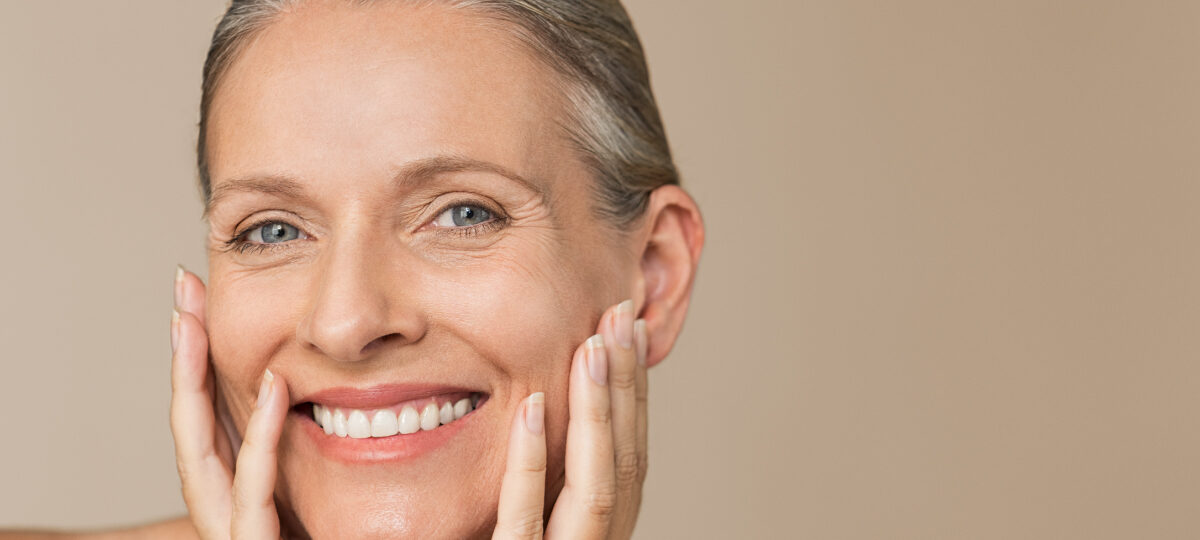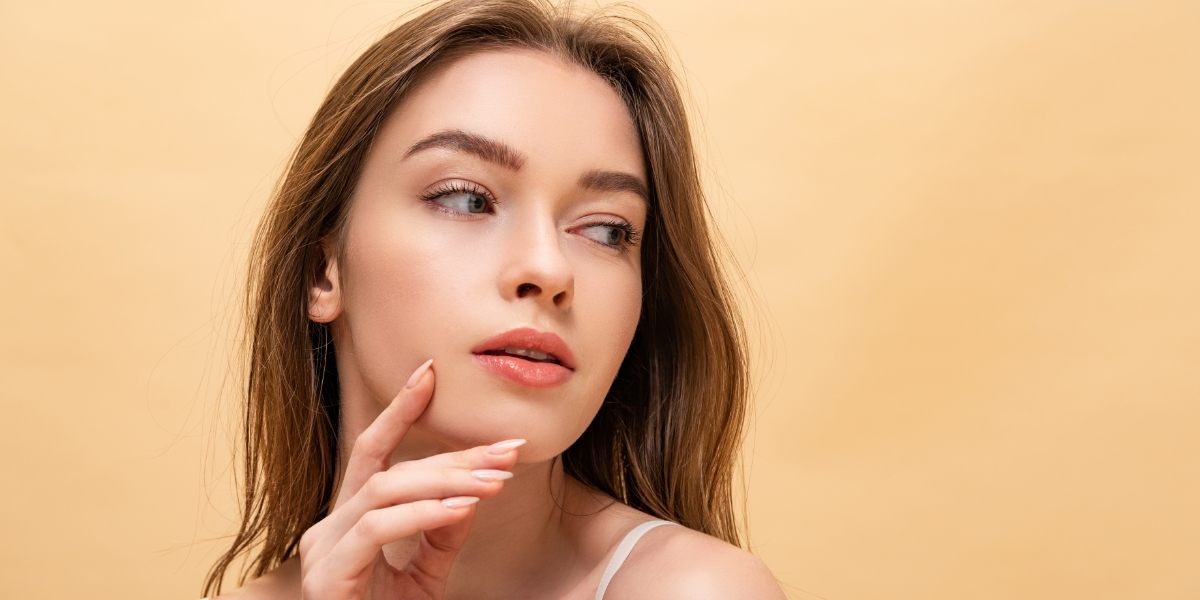
What’s scarier than ghosts and goblins? How about persistent skin problems that just won’t go away, no matter what you try! Whether you’re struggling with acne, dark spots, wrinkles, or redness, you’re not alone. These are some of the most common, yet troublesome skin challenges that plague both men and women and span a wide age range. But there is a bright spot when facing your biggest skin fears: With the right skincare regimen, treatments, and lifestyle changes, you can be well on your way to spookily clear, healthy skin. Here’s how.
Dark Spots
Also called age spots or sun spots, dark spots occur when the skin produces too much of the pigment melanin, resulting in an uneven complexion. UV light from the sun is the number-one cause of melanin overproduction and therefore also dark spots on the skin — so the first line of defense against them is sun protection. Wear daily sunscreen and sun-protective clothing and avoid tanning to help prevent dark spots.
Some of the most effective ways to treat existing dark spots include:
- Topical retinoids. Retinoids are vitamin A derivatives that increase cell turnover, speed up the skin’s natural desquamation or exfoliation process, and slow melanin production. Work with your dermatologist to gradually introduce your skin to retinoids, as they can be drying to the skin.
- Skin-brightening ingredients like vitamin C, kojic acid, and hydroquinone inhibit an enzyme called tyrosinase that is responsible for controlling melanin production. Like retinoids, these ingredients can be irritating to the skin and should be used with the help of a dermatologist to minimize side side effects.
- Chemical exfoliators like glycolic acid, lactic acid, and salicylic acid can be used at home in products like cleansers or during in-office peels. These ingredients accelerate the removal of dead skin cells from the surface, promoting new cell growth.
- Laser skin treatments like Halo® or broadband light (BBL) treatments generally produce the fastest results when treating dark spots and uneven skin tone. One of the benefits of the Halo laser is that most people see dramatic results after only 1 to 2 treatment sessions.
Melasma
Melasma is a type of hyperpigmentation that causes brown or gray patches of skin on the face and is often linked with hormonal changes. For this reason, melasma is common in pregnant women. Like all types of hyperpigmentation, however, melasma can be made worse by UV exposure, so sun protection is a must when treating and preventing this condition.
Because melasma is often recurring, it can be particularly difficult to treat. Many laser and light treatments can actually make melasma worse over time, as they can trigger more hyperpigmentation caused by heat and light. Instead, talk to your dermatologist about the best individualized melasma treatment, which may include a combination approach such as:
- Topical ingredients like retinoids, vitamin C, and/or mild corticosteroids may be used to reduce melanin production and inflammation.
- Microneedling. Studies have shown that microneedling used in combination with topical ingredients can improve results when treating melasma, with little to no side effects.
- Chemical peels can be customized to suit your skin type and specific needs to gently treat melasma and achieve a more even skin tone and texture.
Acne
A variety of factors can contribute to acne breakouts, including diet, stress, hormone imbalances, certain medications, and using the wrong skincare products. Because so many variables can cause acne, this common skin condition can be hard to treat. The best acne treatment regimen will also depend on the type of acne that you have.
In general, however, effective acne treatment involves:
- Reducing sebum, or oil, on the skin.
- Reducing acne-causing bacteria on the skin.
- Clearing clogged pores.
- Reducing inflammation.
Topical ingredients such as salicylic acid, benzoyl peroxide, and retinoids are often the first treatments your dermatologist may recommend for mild to moderate acne. These ingredients can also be combined with laser treatments, peels, or prescription medications for more severe or persistent acne.
Redness
Skin that flushes red, burns, or stings easily likely has a damaged skin barrier, although other conditions such as rosacea can also present with these symptoms, so be sure to get an accurate diagnosis from your dermatologist.
Red, inflamed skin due to a both damaged skin barrier and rosacea can benefit from a barrier repair moisturizer and soothing, anti-inflammatory ingredients like niacinamide, green tea extract, and chamomile.
Additionally, you’ll want to avoid skincare ingredients that can aggravate sensitive skin, such as harsh exfoliants, fragrances, and drying alcohols. If you use a retinoid as part of your skincare regimen, apply it only every other day or every three days to minimize side effects like redness, dryness, and flaking. Retinoids are not generally recommended for those with rosacea.
Wrinkles
Lines, wrinkles, and sagging skin begin to show up as collagen and elastin production slows with age. Sun exposure and other lifestyle factors can accelerate the breakdown of these important proteins, causing premature signs of aging. While there are a number of effective in-office treatments for lines and wrinkles, you will get the most out of those treatments by applying the right daily anti-aging skincare regimen for your skin.
- An effective anti-aging skincare routine should include:
- A retinoid to stimulate collagen and cell turnover.
- A topical vitamin C serum to stimulate collagen production and reduce oxidative stress.
- Hydroxy acids like glycolic acid, lactic acid, and others to exfoliate and increase cell turnover.
For faster and more dramatic results, consider these effective anti-wrinkle skin treatments:
- Injectables like BOTOX® and dermal fillers
- Laser skin treatments
- Microneedling
- Chemical peels
Under-Eye Circles
Dark circles under the eyes can be caused by a number of factors, including genetics, aging, sun exposure, allergies, poor sleeping habits, smoking, and dehydration. Addressing any lifestyle habits that might be contributing to dark or puffy under-eyes can be a first step toward achieving a brighter, more energized appearance.
To improve dark circles due to aging, genetics, and other intrinsic factors, your dermatologist may recommend:
- Applying cold compresses to reduce swelling and shrink dilated blood vessels.
- Sleeping with your head slightly elevated to reduce swelling and puffiness.
- Adding an eye cream that contains ingredients like caffeine, niacinamide, or hyaluronic acid to your skincare regimen.
- Trying in-office treatments like injectable Restylane® Eyelight to plump the under-eye, reducing dark circles and a hollowed appearance.
If you are struggling to manage these or other skincare concerns, don’t hesitate to call our Delray Beach office at (561) 692-6422 or contact us online to schedule a consultation with one of our experienced skincare professionals.





